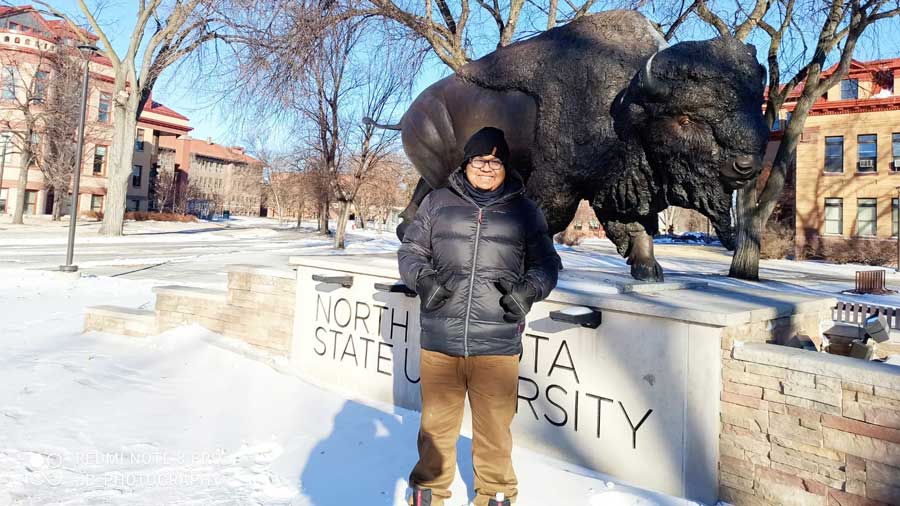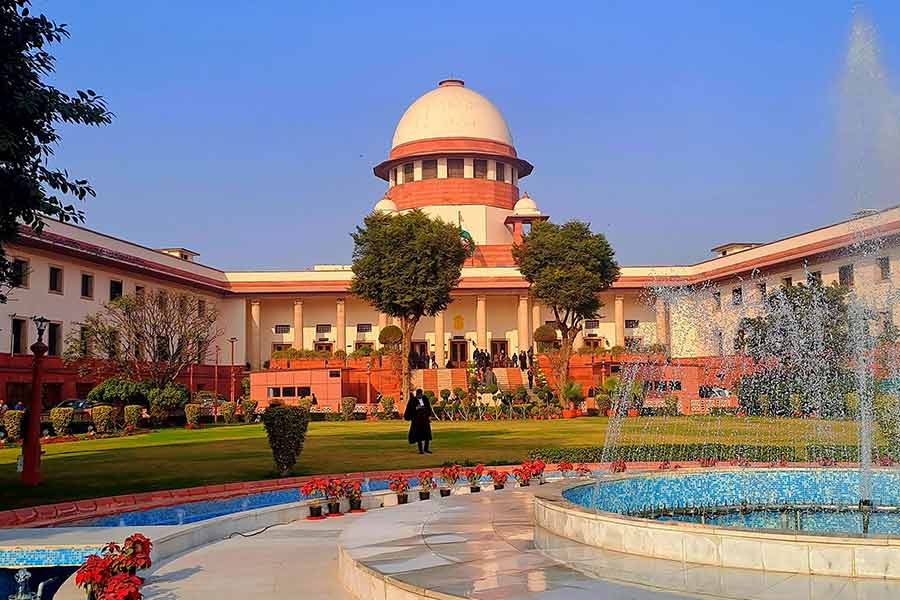An all too well known fact is that the pandemic made everything difficult for the Indian student looking to apply abroad. You would have heard stories about deferred admission procedures, clampdowns on travel, delayed visa processing, and few and far financial grants. But hurdles notwithstanding, many Indian students have managed to bag full scholarships in the STEM (science, technology, engineering and mathematics) disciplines. At a time when financial crunch had impacted some of the top colleges in the US, full scholarship grants had not dried up in many lesser-known universities. Neither did these institutes send students home or totally stop classroom lessons.
Rajrup Mitra landed in Grand Forks, a small city in North Dakota, in the first week of August 2021. He was going to pursue doctoral studies in electrical engineering at the University of North Dakota (UND). The Calcutta boy had applied to three universities in the US and received fully-funded admits from two of them — the University of North Texas and the University of North Dakota — both in remote locations. Both colleges granted him a complete tuition fee waiver; UND offered him a research assistantship (RA). He says, “The stipend I will receive as an RA would be sufficient to keep me afloat. Grand Forks being a pretty small college town, the living is really affordable here.”
Aritra Roy, who did his master’s in mathematics from Jadavpur University, landed in the US last December to pursue a PhD from North Dakota State University (NDSU). The university is located in Fargo in North Dakota, which faces extreme climate with temperatures falling to -51 degrees Celsius in winter and rising to 49 degrees Celsius in summer. Snowstorms, blizzards, tornadoes and flooding are all quite common here.

Rajrup Mitra Sourced by The Telegraph
Aritra says it took him some time to get used to the cold and the quiet, but the maths department at NDSU has many high-profile professors and he is “very happy to be able to work under one of them”.
Both Rajrup and Aritra’s education advisor, Arindam Roy of EdxCare International, a foreign education consulting firm in Calcutta, believes most students who want to pursue higher studies in the US tend to narrow their search to some well-known institutions and neglect others. He says, “Remote university campuses have better chances of receiving a full financial aid than others due to less or almost no competition from other students with similar credentials. We guide and show them why it is better to research the advantages of different universities based on their individual needs and test scores and that the funding scenario has been hugely affected due to Covid-19 is a myth.”
Studying in a remote university or an institute in the wilderness is usually an advantage for many students. Saurav Bhowmick from Guwahati joined the University of Alaska, Fairbanks, famous for its subarctic climate. Says Saurav, who got his PhD in biochemistry and neuroscience in 2017, “I was excited to explore the mechanisms of hibernation and hypothermia and how these mechanisms could be translated in the treatment of human health.” After working as a postdoctoral research scientist with a hospital network in New Jersey, he joined a big drug discovery pharmaceutical company recently.
Soumilee Chaudhuri, chose Montana State University, in Bozeman, Montana, western US, for her undergraduate studies because she was looking for “an experience totally different”. She says, “Shifting from a city of 14 million to a town of 50,000 people was incredible and life changing.” She had always been a fan of cold and snowfall, and Montana did not disappoint her. She adds, “You can easily forget you are walking in -30 degrees Celsius because of the gorgeous Rocky Mountains that surround you.” She enjoyed hiking, backpacking, running, kayaking, surfing, skiing and tubing all through the Montana mountains and lakes before she graduated last spring. She’s recently moved to Indiana to pursue a PhD in biomedical sciences at the Indiana University School of Medicine.

Soumilee Chaudhuri. Sourced by The Telegraph
There are students who shift to remote colleges seeking better financial support and cheaper cost of living. Maharshi Dey joined a PhD course in mechanical engineering in Missouri, but after a semester shifted to UND as it offered him full scholarship. He says, “The full funding is good enough to live in North Dakota. I can send money to my parents in India, I bought a car and also can make yearly trips to India.” He is planning to wrap up his PhD in a year and settle down with a research job.

Maharshi Dey. Sourced by The Telegraph
Some experts, however, stress that location is important but not the only factor to be considered in choosing institutions. Says Sudarshan Saha, Education USA advising coordinator, “There are close to 2,00,000 Indian students currently enrolled in US universities and colleges, scattered almost all over the country. Choice of institutions among Indian students varies based on their academic, personal and professional priorities. Furthermore, some students feel more comfortable in smaller classrooms with more intimate learning contexts whereas others thrive on bigger campuses.”
Saha advises students to assess their own strengths and select the “best-fit” institution according to their own priorities.











